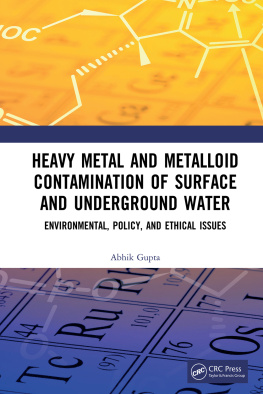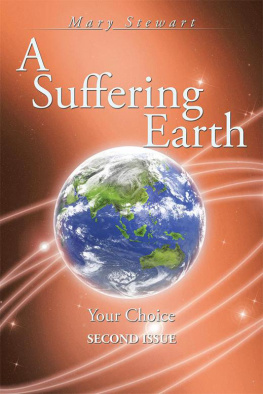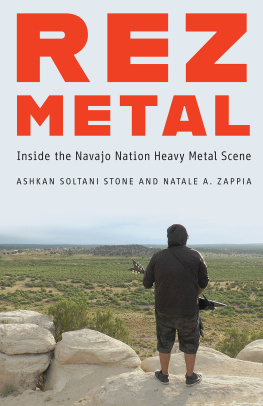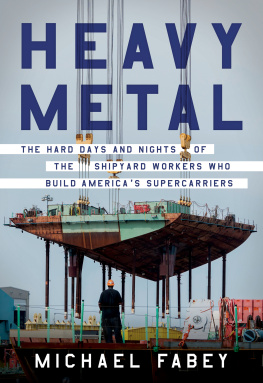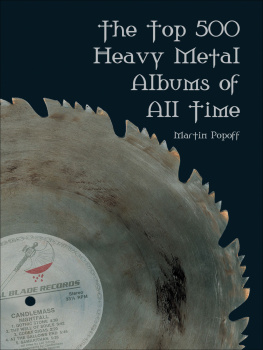Gupta Abhik - Heavy Metal and Metalloid Contamination of Surface and Underground Water
Here you can read online Gupta Abhik - Heavy Metal and Metalloid Contamination of Surface and Underground Water full text of the book (entire story) in english for free. Download pdf and epub, get meaning, cover and reviews about this ebook. year: 2020, publisher: Taylor & Francis Group, genre: Religion. Description of the work, (preface) as well as reviews are available. Best literature library LitArk.com created for fans of good reading and offers a wide selection of genres:
Romance novel
Science fiction
Adventure
Detective
Science
History
Home and family
Prose
Art
Politics
Computer
Non-fiction
Religion
Business
Children
Humor
Choose a favorite category and find really read worthwhile books. Enjoy immersion in the world of imagination, feel the emotions of the characters or learn something new for yourself, make an fascinating discovery.
- Book:Heavy Metal and Metalloid Contamination of Surface and Underground Water
- Author:
- Publisher:Taylor & Francis Group
- Genre:
- Year:2020
- Rating:3 / 5
- Favourites:Add to favourites
- Your mark:
- 60
- 1
- 2
- 3
- 4
- 5
Heavy Metal and Metalloid Contamination of Surface and Underground Water: summary, description and annotation
We offer to read an annotation, description, summary or preface (depends on what the author of the book "Heavy Metal and Metalloid Contamination of Surface and Underground Water" wrote himself). If you haven't found the necessary information about the book — write in the comments, we will try to find it.
Gupta Abhik: author's other books
Who wrote Heavy Metal and Metalloid Contamination of Surface and Underground Water? Find out the surname, the name of the author of the book and a list of all author's works by series.
Heavy Metal and Metalloid Contamination of Surface and Underground Water — read online for free the complete book (whole text) full work
Below is the text of the book, divided by pages. System saving the place of the last page read, allows you to conveniently read the book "Heavy Metal and Metalloid Contamination of Surface and Underground Water" online for free, without having to search again every time where you left off. Put a bookmark, and you can go to the page where you finished reading at any time.
Font size:
Interval:
Bookmark:

Heavy Metal and Metalloid Contamination of Surface and Underground Water
Heavy Metal and Metalloid Contamination of Surface and Underground Water
Environmental, Policy, and Ethical Issues
Abhik Gupta

First edition published 2021
by CRC Press
6000 Broken Sound Parkway NW, Suite 300, Boca Raton, FL 33487-2742
and by CRC Press
2 Park Square, Milton Park, Abingdon, Oxon, OX14 4RN
2021 Taylor & Francis Group, LLC
CRC Press is an imprint of Taylor & Francis Group, LLC
Reasonable efforts have been made to publish reliable data and information, but the author and publisher cannot assume responsibility for the validity of all materials or the consequences of their use. The authors and publishers have attempted to trace the copyright holders of all material reproduced in this publication and apologize to copyright holders if permission to publish in this form has not been obtained. If any copyright material has not been acknowledged please write and let us know so we may rectify in any future reprint.
Except as permitted under U.S. Copyright Law, no part of this book may be reprinted, reproduced, transmitted, or utilized in any form by any electronic, mechanical, or other means, now known or hereafter invented, including photocopying, microfilming, and recording, or in any information storage or retrieval system, without written permission from the publishers.
For permission to photocopy or use material electronically from this work, access www.copyright.com or contact the Copyright Clearance Center, Inc. (CCC), 222 Rosewood Drive, Danvers, MA 01923, 978-750-8400. For works that are not available on CCC please contact mpkbookspermissions@tandf.co.uk
Trademark notice : Product or corporate names may be trademarks or registered trademarks, and are used only for identification and explanation without intent to infringe.
ISBN: 9780367188030 (hbk)
ISBN: 9780367567002 (pbk)
ISBN: 9780429198373 (ebk)
Typeset in Times
by Deanta Global Publishing Services, Chennai, India
Contents
Human use of metals goes back to antiquity. Implements made by hammering copper have been found from about 7000 bce in eastern Anatolia (Turkey). Objects made of smelted copper dating back to about 3800 bce have been unearthed in Iran (History World 2003). There is evidence of use of copper from Nubia in Sub-Saharan Africa in 4000 bce through imports from Egypt, although copper-smelting might have started there during 26862181 bce , when bronze was also being used by alloying copper with tin (Childs and Killick 1993). The use of copper was prevalent in the pre-Harappan culture in Indus Valley (26002400 bce ) followed by extensive use of copper, bronze (copper and tin), lead, silver, and gold in Harappan culture (23001750 bce ) (Bose et al. 1971). Copper mines are known to have existed in the Balkans by 4000 bce . Bronze was made by smelting copper and tin together, and the Bronze Age is said to have begun by about 2800 bce , followed by the age of iron from about 1500 bce (History World 2003). And then, with improved furnaces reaching higher temperatures, steel could be produced from iron. At first, humans started using native or naturally occurring metals, notably copper, (Roberts et al. 2009) but also gold. Mining for metals and smelting of ores began later.
With the progress in science, newer metals were discovered and technologies evolved to make innovative uses of these, albeit with adverse environmental consequences. For example, cadmium, a toxic metal which is not known to have any biological function, was discovered in 1817, and primarily used as a coating or plating on steel objects to protect them from corrosion (Reardon 2011). Today, cadmium is also extensively used in nickelcadmium batteries, cadmium pigments, stabilizers, and alloys, and in electronic compounds such as cadmium telluride (International Cadmium Association 2003). Chromium, a transition metal, was discovered in 1798, and is added as an alloy in steel to make it more resistant to oxidation and corrosion (Reardon 2011). While trace amounts of chromium are important for health, hexavalent chromium is highly toxic and a carcinogen. Its use in leather tanning is, therefore, fraught with environmental risks and concerns. We could cite numerous such examples of heavy metals used in various industrial activities around us, such as lead in paints and inverter batteries.
With their increasing use in various industrial activities and their release from mining activities, heavy metals along with persistent organic pollutants became the most important classes of chemicals of serious environmental concern. Contamination of our freshwater ecosystems including groundwater by heavy metals, and their accumulation in freshwater biota, therefore, pose a threat to both the environment and public health. And metals are there to remain in the environment for several reasons. As early as the 1990s, it was suggested that though advanced non-metallic materials such as polymers, semiconductors, ceramics, and composites are projected to replace the use of metals, the demand for metals is not expected to diminish, especially in view of the need for growth of infrastructure in developing countries, and maintenance of the standard of living in developed countries (Eagar 1991). And today, with climate change looming large, several metals will be essential for the low-carbon energy technologies to combat this global challenge. Among these are heavy metals such as cobalt, nickel, manganese, copper, chromium, gallium, indium, lead, molybdenum, silver, and zinc, and the metalloid boron. Increase in mining activities for these metals will lead to the contamination of freshwater systems and groundwater, posing problems that will require monitoring and mitigation.
I owe the motivation to write this book to these facts, as well as my research interest in heavy metals, which dates back to the late 1980s and early 1990s, while studying the contamination of urban hill streams in the northeastern region of India. Subsequently, this interest expanded to include the accumulation of these elements in aquatic plants and animals, along with studies on the toxic effects on their morphology, physiology, biochemistry, and behavior. Another major area of concern was arsenic, which entered into groundwater from geogenic sources and created a public health problem of gargantuan magnitude, with its scourge being the most acute in the river valleys of Asia.
While trying to conceptualize this book, it occurred to me that while several booksmostly edited compilations with contributions from expertsover the last couple of decades or more had thrown light on various environmental and biological aspects of heavy metal and metalloid contamination, information was scarce on our understanding of the policy issues pertinent to this problem. It was perhaps needed to put together our policies on water resources and their pollution and critically assess how adequately these covered the specifics of heavy metal and metalloid contamination. Further, I also felt that heavy metal and metalloid contamination of water raised several moral-ethical questions, which warranted some discussion in the light of the different discourses in the field of environmental ethics. This book has accordingly been divided into three broad sections on the environmental, policy, and ethical issues. The sub-sections in the first section on environmental aspects include the ongoing debate on using or discarding the term heavy metals; the geogenic and anthropogenic contamination of surface and underground water by heavy metals; their accumulation and toxicity in biota; the prospects of and the challenges to their mitigation by bioremediation; and the implications of global climate change in their occurrence, distribution, and toxicity. The policy section gives an overview of the policies directly or indirectly pertaining to heavy metals in water adopted by different countries; while the third section on ethical issues looks at the relevance of the existing ethical theories in addressing heavy metal contamination, and the lessons to be learnt from various indigenous worldviews on water and its quality.
Font size:
Interval:
Bookmark:
Similar books «Heavy Metal and Metalloid Contamination of Surface and Underground Water»
Look at similar books to Heavy Metal and Metalloid Contamination of Surface and Underground Water. We have selected literature similar in name and meaning in the hope of providing readers with more options to find new, interesting, not yet read works.
Discussion, reviews of the book Heavy Metal and Metalloid Contamination of Surface and Underground Water and just readers' own opinions. Leave your comments, write what you think about the work, its meaning or the main characters. Specify what exactly you liked and what you didn't like, and why you think so.

